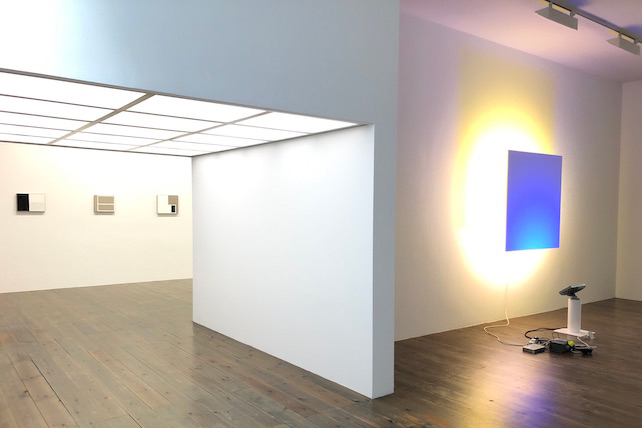
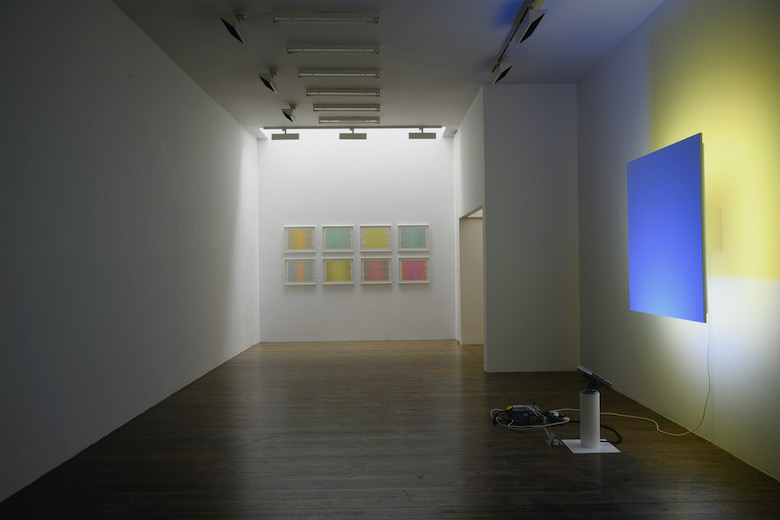
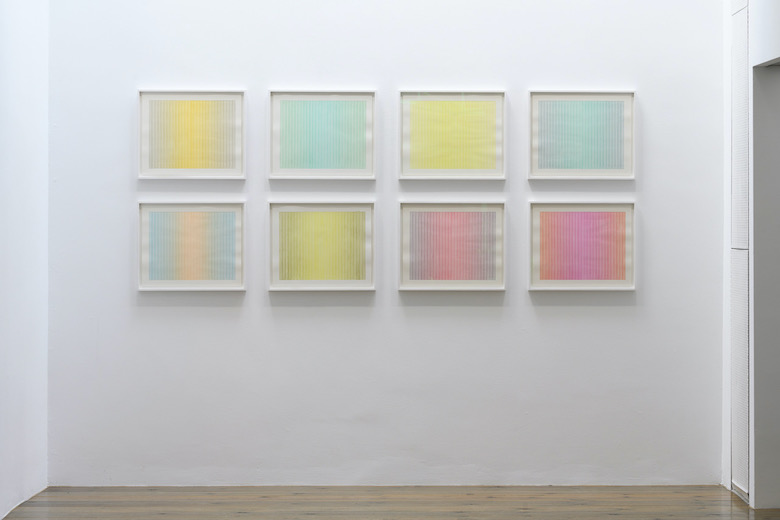
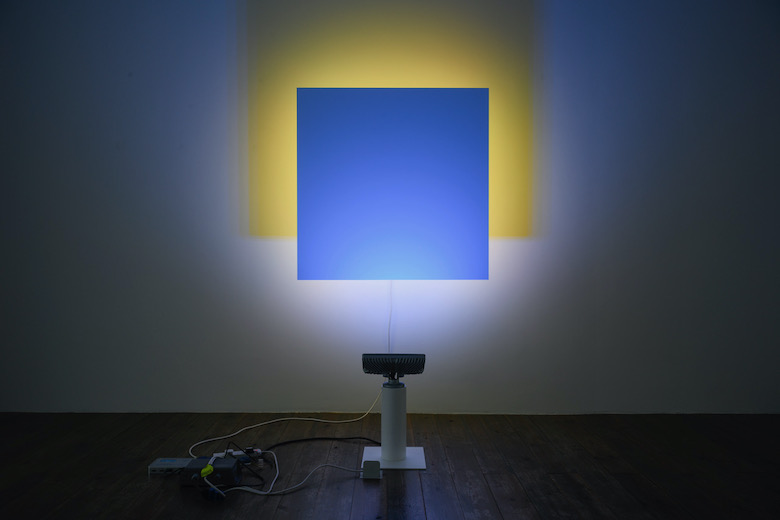
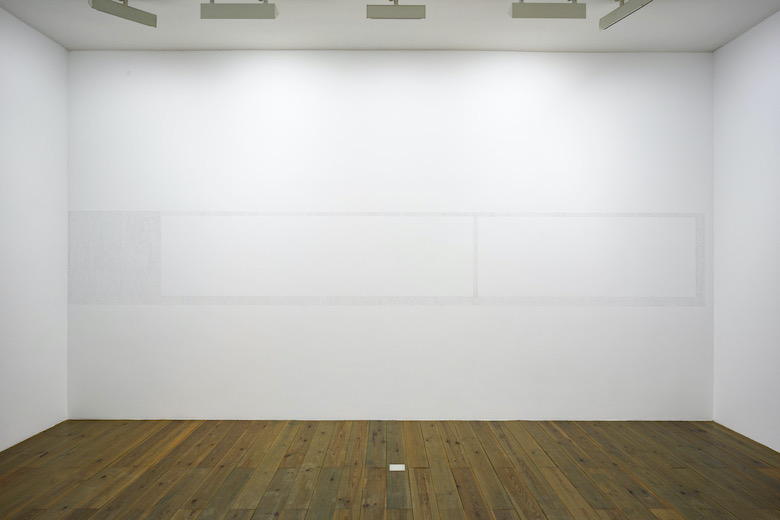
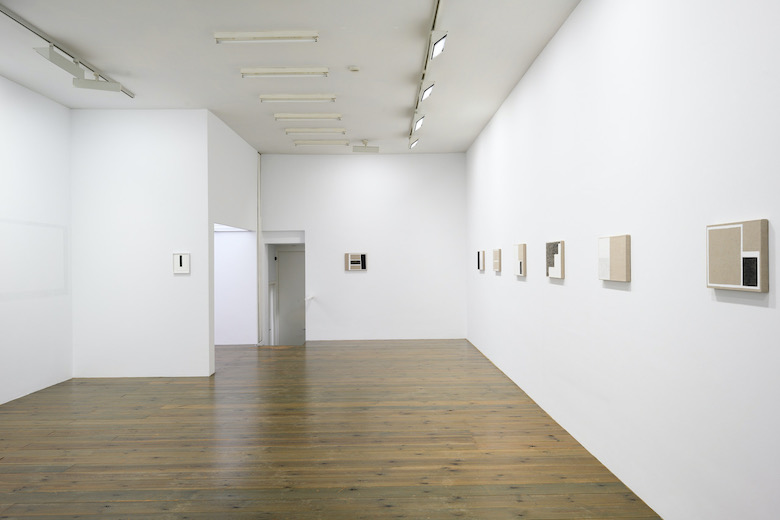
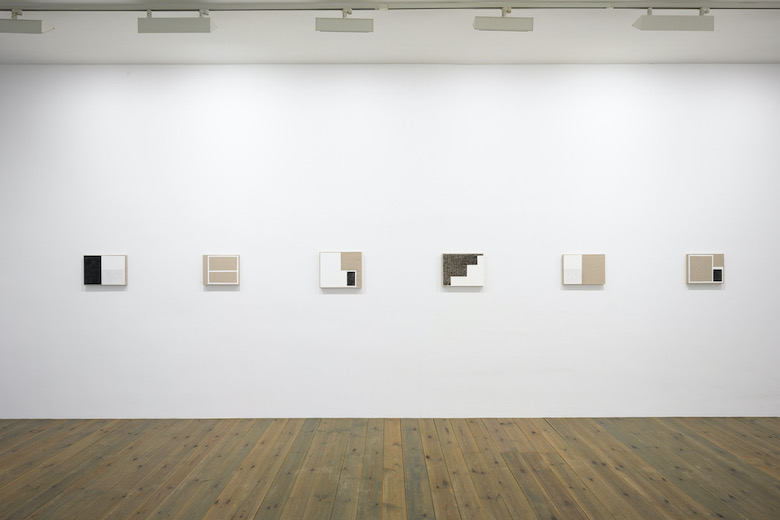
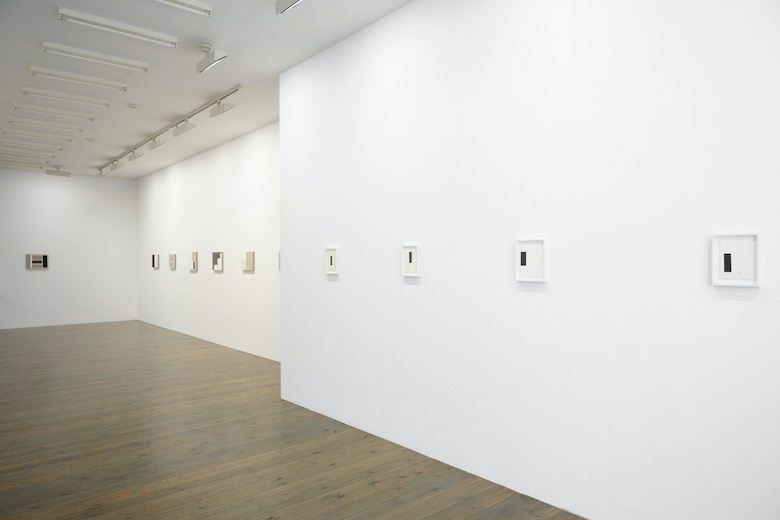
Slewe Gallery is pleased to announce the opening of the third duo exhibition in a row in the gallery this Spring with new works by the London based artist Adam Barker-Mill and the Scottish artist Alan Johnston. Both artists are internationally known, belong to the same generation and have been friends for a long time. Moreover, they are artistically linked in their fascination for light. Both artists have shown their work previously at the gallery. The exhibition opens on Thursday May 12 during the tenth edition of Amsterdam Art Week, which takes place from May 11 to 15.
Adam Barker Mill, born in 1940, is known for his films and light sculptures. He will be showing a new light sculpture entitled Flow. This large-scale installation consists of an alternating cycle of eleven colours (including black and white). It creates a mesmerizing flow of slowly evolving colour combinations. The work lasts 30 minutes, after which all possible colour permutations have been seen. The cycle then returns to the beginning. In addition, several recent water colours by him are on display.
Edinburgh-based Alan Johnston, born in 1945, known for his landmark murals featuring tiny repetitive pencil scribbles, will make a new wall drawing especially for the gallery. In addition, he will exhibit some of his small black and white paintings, made with charcoal, pencil, wax and acrylic on linen or wood panel. He is interested in the reflection of light and shadow and tries to define space. He is strongly inspired by the Japanese tradition of experiencing space (ma) and subtle balance (wabi). Some of his small works on paper will be shown as well.
A work of art is a construction. When an artist makes an object, he or she is leaving traces that reveal the way of constructing. It is his or her handwriting. The exhibition at Slewe Gallery brings work from four artists from different countries and generation together that shows marks, grids and helplines that were necessary to establish the final art work. The exhibition Traces with works by Adam Colton, Alan Johnston, Caro Jost and Stanislav Kolíbal opens Friday April 21 and lasts until May 27.
The Czech drawer and sculptor Stanislav Kolíbal (*1925, Orlová) is the strongest representative of the constructivist movement in Eastern Europe that piloted the clear abstract geometrical art through the oppressive days of communist regime.
The Scottish artist Alan Johnston (*1945, Edinburgh) makes huge wall drawings out of miniscule repetitive scribbles that relate to the architecture of the site. Small wooden panels with fields of such scribbles together with black and white planes serve as models.
Adam Colton (*1957, Manchester), known for organic objects in off whitish coloured polyurethane or aluminium, shows the grid with numbers used to blow up the scale from model to final sculpture.
Caro Jost (*1965, München) shows frottages on canvas of historical pavements. The series is a pilgrimage, going into the footsteps of the great New York painters of the twentieth century. Dust and grit from the pavement in front of Barnett Newman’s studio has stuck in the surface of white paint.
Slewe Gallery is pleased to start the new year with a group show from January 12 through February 16. Selected Works includes a selection of about 14 works by 7 artists of the gallery, including recent pieces by Merina Beekman, Frank Van den Broeck, Alan Charlton, Adam Colton, Martin Gerwers, Michael Jacklin and Alan Johnston.
During the exhibition there will be a concert held on Sunday 27 January at 3 pm. John snijders will perform Sonatas and Interludes by John Cage for prepared piano. Entrance free (rsvp: info@slewe.nl).
Slewe Gallery will participte at Art Rotterdam from 7 through 10 February (www.artrotterdam.nl).
A Tactile Vision. A choice by Alan Johnston, 29.08 – 26.09.2009
Slewe Galerie opent het nieuwe seizoen met de expositie Japan. A Tactile Vision. Hij is samengesteld door de uit Schotland afkomstige kunstenaar Alan Johnston (*1945). In deze tentoonstelling poogt Johnston door te dringen tot de kern van het Japans esthetisch denken. Hij doet persoonlijk verslag van zijn fascinatie door werk van Japanse en door Japan geïnspireerde Westerse kunstenaars samen te brengen, die hij tijdens zijn loopbaan ontmoette. Hij gaat het spoor terug.
Op een regenachtige middag in januari eind jaren zeventig nam collega-kunstenaar Richard Tuttle Johnston mee naar een tentoonstelling van John McLaughlin in de galerie van Andre Emmerich in New York. McLaughlin wordt in de moderne kunst beschouwd als een sleutelfiguur, wat Japan betreft. De in Los Angeles woonachtige schilder en Japankenner McLaughlin (1898-1976) sloeg met zijn minimale ‘hard-edge’ schilderijen een brug tussen het reductionistische modernisme van Malevich en Mondriaan en de traditionele Japanse kunst. Voor McLaughlin betekende de vijftiende-eeuwse monnik/schilder Sesshu de belichaming van de essentie van de Japanse beeldende esthetica. Sesshu is bekend van zijn bijna abstracte inkttekeningen, waarbij met spaarzame middelen oneindige ruimte wordt gesuggereerd. Daarnaast legde hij zich toe op afgewogen tuinontwerpen.
Tijdens zijn vele reizen heeft Johnston een uitgebreid internationaal netwerk opgebouwd van kunstenaars, architecten, galeries en verzamelaars. Dit resulteerde in uitwisselingen en samenwerkingen over en weer. Zo leerde hij via de kunstenaar/galeriehouder Hideo Shimada uit Yamaguchi de uit Düsseldorf afkomstige fotograaf Thomas Struth kennen. Als gevolg daarvan portretteerde Struth in Edinburgh de stad, Johnstons familie en vrienden. Met de architect Shinichi Ogawa werkte Johnston in een voor beide inspirerende samenwerking meerdere ideeën uit op het grensvlak van beeldende kunst en architectuur. Voor de tentoonstelling worden van deze kunstenaars en anderen werken samengebracht. Soms vers uit het atelier, in andere gevallen in bruikleen uit privé-verzamelingen.
Waar het John McLaughlin om te doen was - en in zijn spoor ook Alan Johnston - is het zichtbaar maken van het onuitsprekelijke, de uitsparing. Hierbij diende de grote lege ruimtes in de tekeningen van Sesshu als oriëntatie. Dit moeilijk omschrijfbaar begrip wordt ‘ma’ genoemd. Naast een andere notie ‘wabi’, vertaald met subtiel (in relatie tot balans), geldt dit niet alleen als kernwoord voor de Japanse traditie maar ook voor de moderne minimale abstracte Westerse kunst.
Deelnemende kunstenaars: Richard Tuttle, Hideo Shimada, Thomas Struth, Shinichi Ogawa, John McLaughlin, Adam Barker-Mill, Masayuki Yasuhara, Takashi Suzuki, Atsuo Hukuda, Roger Ackling, Tom Clark, Andreas Karl Schulze, Tom Benson, Ian Hamilton Finlay, Kenzo Onoda, Takaya Fujii, Eiji Watanabe, Yasuko Otsuka, On Kawara, Ragna Róbertsdóttir, Takahiro Iwasaki, Kiyoshi Yamato, David Connearn.